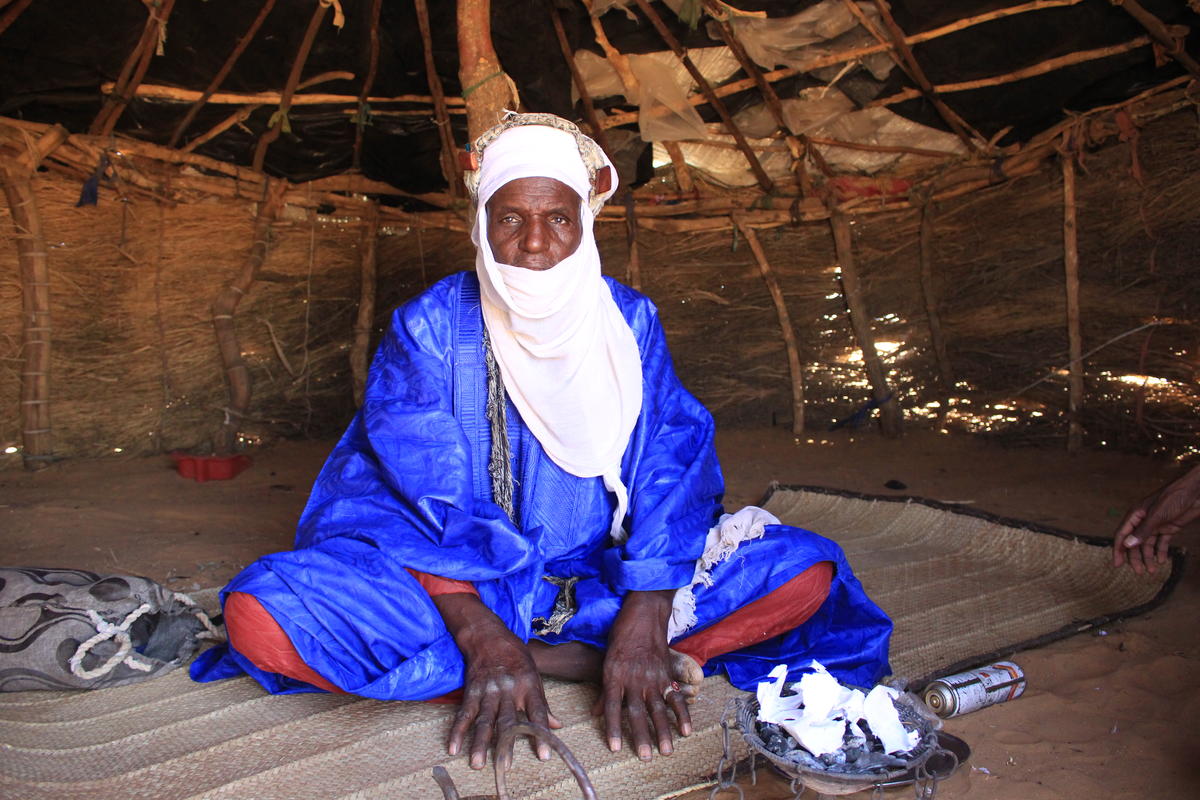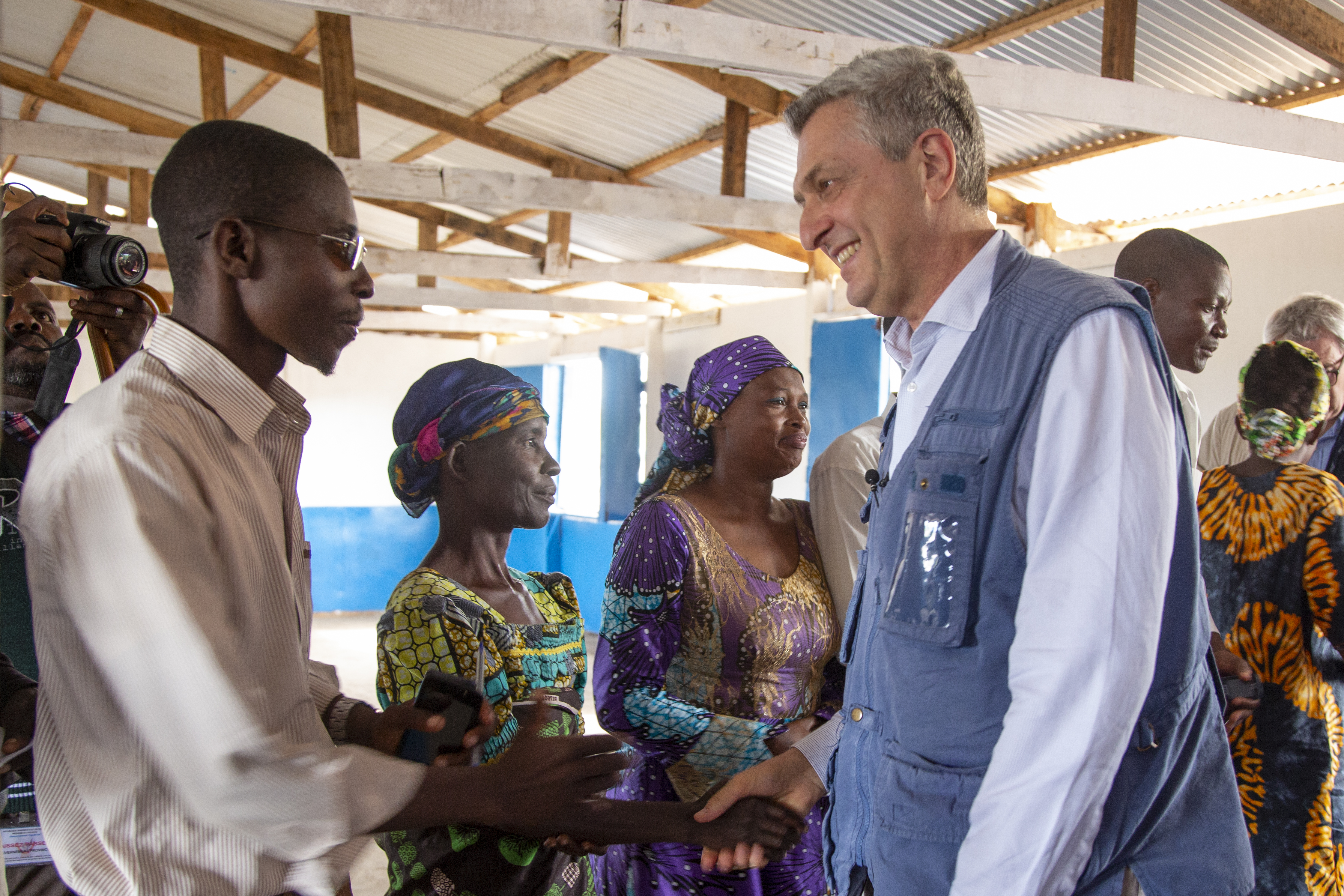Farmer decides to stay in Somalia after crossing the seas on a round trip to nowhere
Farmer decides to stay in Somalia after crossing the seas on a round trip to nowhere

GALKAYO, Somalia, November 23 (UNHCR) - When local militiamen raided his home in central Somalia five years ago, Siidow knew he had to go far, far away if he was to survive and have any hope of providing a half-decent future for his large family.
"I was forced to abandon my house and all my property, including my land, when I was attacked," the 67-year-old grandfather told UNHCR in the northern Somalia town of Galkayo, hundreds of kilometres north of his home in Afgooye, where he was a well-known fruit and vegetable farmer.
Siidow did not hang around to consider the pros and cons of staying in Afgooye. He fled immediately with his wife, Maryam, leaving behind eight surviving children and the five grandchildren that he cared for.
But he did have a plan. He would head to the lively, thriving port of Bossaso, which is located on the Gulf of Aden in the semi-autonomous and relatively stable area of northern Somalia, Puntland. He would then contact smugglers and pay for his passage across the stretch of water separating the Horn of Africa from Yemen.
"I thought that making the dangerous trip to Yemen by sea would be better than staying in Afgooye, where gangs plunder and rape. I thought that if I escaped being eaten by sharks, I would certainly have a secure life in Yemen or Saudi Arabia," Siidow told UNHCR.
Like countless others before him, and many more to come, Siidow saw Yemen as a promised land; a place where he could find a decent job or a stepping stone to the Persian Gulf states and employment. He knew they might not survive the journey, but felt there was no other choice.
After a long and punishing road journey, Siidow and Maryam reached Bossaso in mid-2004 and soon got in contact with the hardened smugglers who ferry tens of thousands of people across the high seas on rickety vessels to the coast of Yemen every year.
A month after arriving, they were told that a boat was ready and they must each pay US$100 for the crossing. "We were more than 300 people on a boat that was designed to carry a maximum of 60," Siidow recalled. "We were only allowed to bring a handful of dates and some biscuits as the [armed] smugglers wanted to use all the available space to carry people."
It was the beginning of an ordeal. On the second day, the engine broke down and the vessel started taking on water. "The armed smugglers forced us to start bailing out the boat to prevent it from sinking. We did this for days until finally reaching the Yemeni coast." Some people were beaten.
All the passengers were forced into the sea several hundred metres from the shore. Siidow tried to help his wife, who could not swim. "I was afraid we would die together," he said, adding that he was determined to survive.
They made it to the beach, though many of their fellow passengers, already exhausted after so many days adrift under a baking sun, drowned in the swell. After a brief rest on the beach, the survivors trekked inland.
Most of the Somalis who reach Yemen are rounded up and taken to a reception centre, where they are interviewed by UNHCR before being taken to a refugee camp. But Siidow managed to evade the authorities and reach the port city of Aden.
"I was lucky enough to find small jobs, like washing cars and working for a butcher. After working for two months, I had saved enough for us to go to Saudi Arabia," he said. The couple made their way to the Red Sea city of Jizan in the far south-west of Saudi Arabia, confident that things were looking up.
But, instead they ended up flying back to the embattled Somali capital, Mogadishu, just 30 kilometres east of their hometown of Afgooye. The pair had almost come full circle. Siidow again had no hesitation about what to do next. "We couldn't stay in Mogadishu, it was too dangerous. We immediately decided to flee to Galkayo, using the money we had left from the work in Yemen." The whole family is now reunited in Galkayo.
Galkayo is also located in Puntland, but far from the sea - and Siidow has no plans to risk his life again in search of an elusive, and probably unrealistic, dream. "I will never attempt another trip outside Somalia. I see no reason to risk my life again." For now, he is content with his life, grateful that his family are safe and to have a job as a cleaner.
Many others chase a similar dream. In the first 10 months of this year, at least 62,000 people arrived on the Yemeni coast on smugglers' boats. More than 430 people have drowned or are missing and feared dead. Most of those making the Gulf of Aden crossing from the Horn of Africa are fleeing poverty, but many, mainly Somalis and Ethiopians, are escaping conflict or persecution.
By Nur Kassim and Amina Osman in Galkayo, Somalia and Anne Kamau in Nairobi, Kenya








